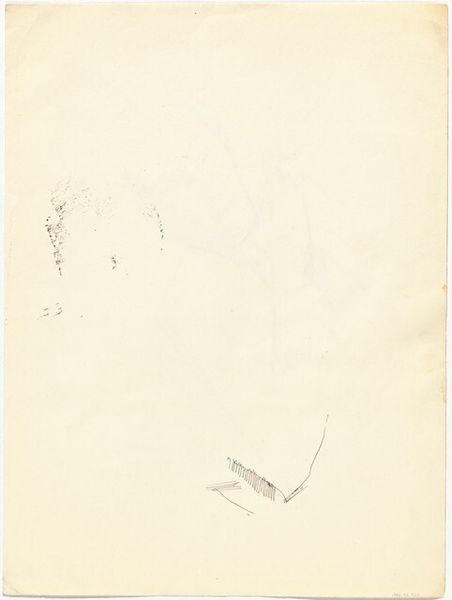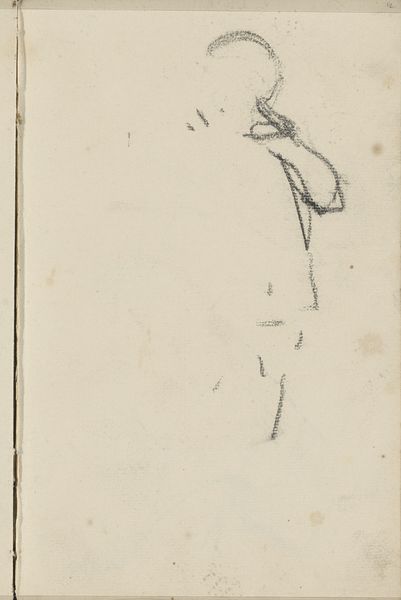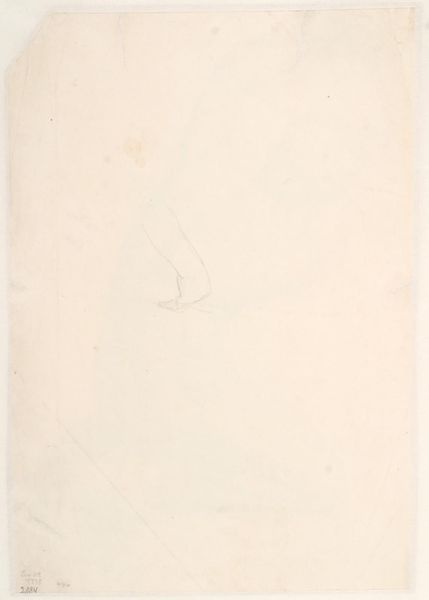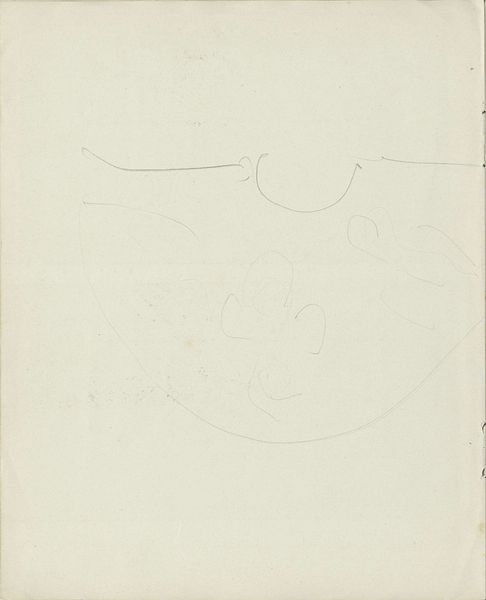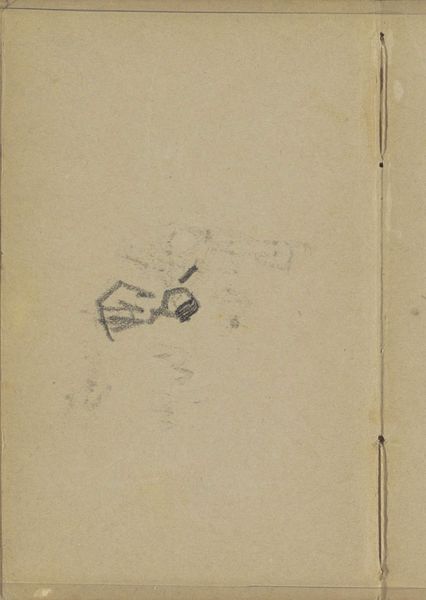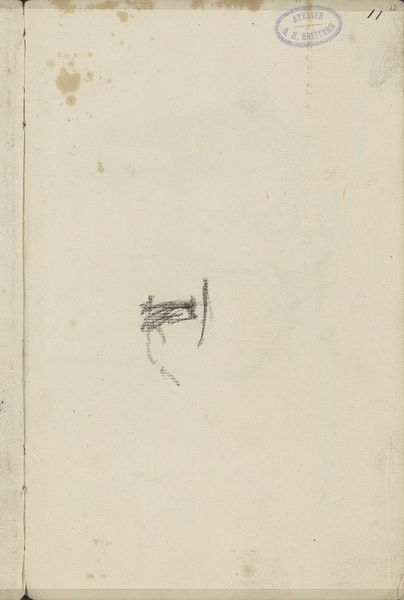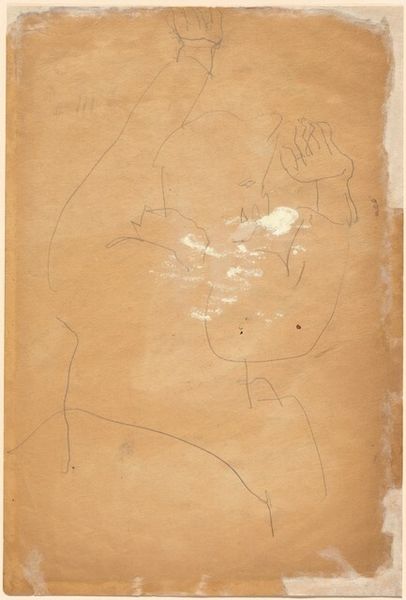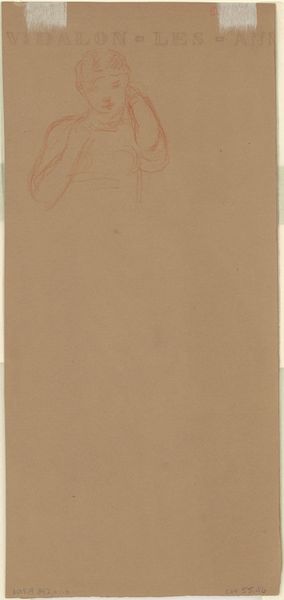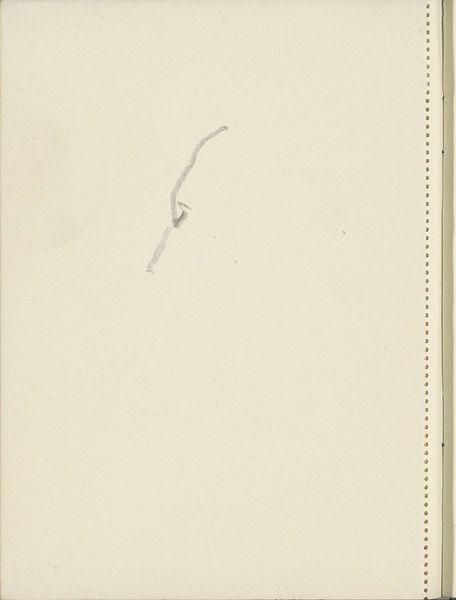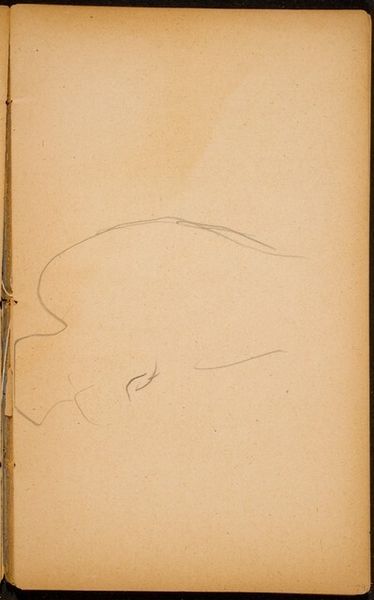![Untitled [verso] by Mark Rothko](/_next/image?url=https%3A%2F%2Fd2w8kbdekdi1gv.cloudfront.net%2FeyJidWNrZXQiOiAiYXJ0ZXJhLWltYWdlcy1idWNrZXQiLCAia2V5IjogImFydHdvcmtzLzY0NDlhMjdjLWFlNTItNDUwMS1iNjYwLTRjY2NhYjBkNTE2MS82NDQ5YTI3Yy1hZTUyLTQ1MDEtYjY2MC00Y2NjYWIwZDUxNjFfZnVsbC5qcGciLCAiZWRpdHMiOiB7InJlc2l6ZSI6IHsid2lkdGgiOiAxOTIwLCAiaGVpZ2h0IjogMTkyMCwgImZpdCI6ICJpbnNpZGUifX19&w=1080&q=75)
drawing, paper, pencil
#
drawing
#
figuration
#
paper
#
pencil
#
line
Dimensions: overall: 30.6 x 23.1 cm (12 1/16 x 9 1/8 in.)
Copyright: National Gallery of Art: CC0 1.0
Editor: Here we have an untitled drawing, most likely created by Mark Rothko, using pencil on paper. It's incredibly minimal, just a few lines suggesting a form, perhaps an eye. How should we read a piece where the hand of the artist feels so… present, yet elusive? Curator: Let’s consider the materiality. Notice the type of paper. The smudges and age suggest use, even reuse. Is this preparatory? Was the paper precious or merely a surface of convenience? Rothko is celebrated for the sublime; could this sketch reveal the labor – the means of production – that lead to that "effortless" visual experience? What does the lack of finish mean in terms of artistic labour here? Editor: That's fascinating. So, instead of focusing on what it *is*, we're looking at *how* it was made, the choices in materials? How does that change our understanding? Curator: Exactly! The art market often elevates the finished object, obscuring the artist's hand and the socio-economic context of its creation. Seeing the process, the ephemeral mark-making, grounds the work. Was this made in his studio or a fleeting moment in a public space. Can we see this choice as part of a greater narrative of labour and economic systems? Editor: It makes it feel more human, somehow, less like a precious object and more like an artifact of someone's working process. Something accessible rather than rarefied. Curator: Precisely. By acknowledging the labour and the "everydayness" of the materials, we democratize the art experience and question traditional hierarchies. What hidden aspects of artmaking could pieces like this unveil for the viewer? Editor: This focus on material reality makes the piece speak about something bigger. I see a new dimension to the meaning. Thanks!
Comments
No comments
Be the first to comment and join the conversation on the ultimate creative platform.
